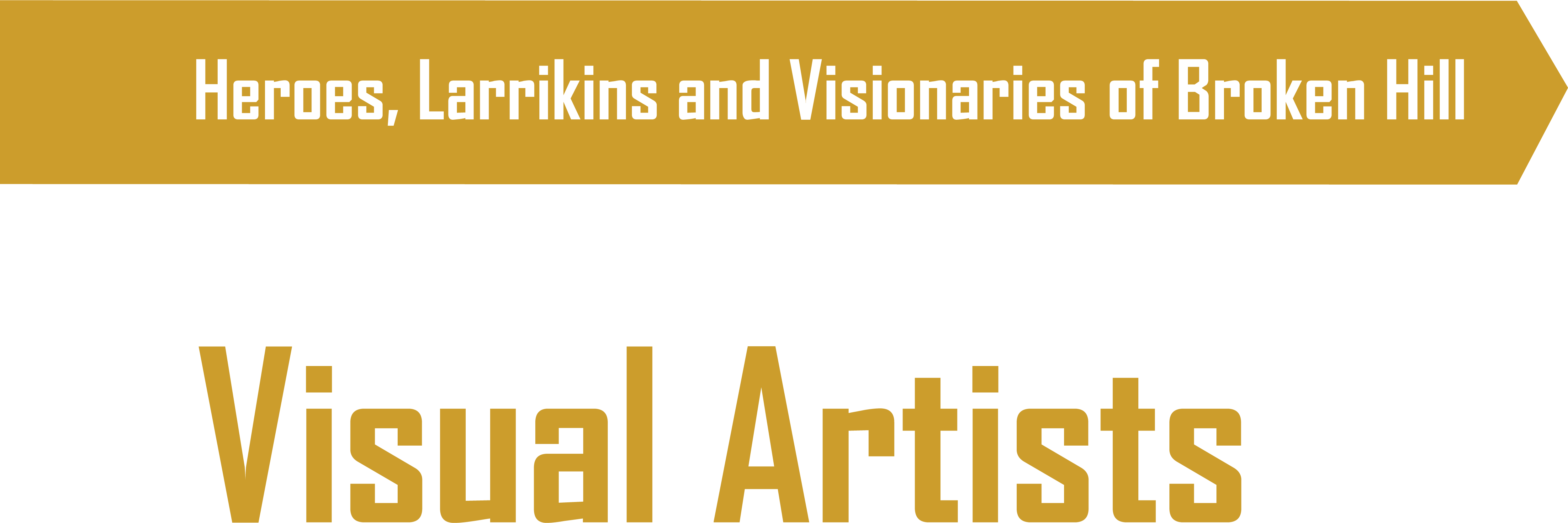Visual Artists

Broken Hill is home to some of Australia’s most popular artists. The Silver City has, over the years, attracted creatives who came to see the heat rising from the desert; to paint the bluest skies; to escape the ‘art mafia’ of the big cities. The first regional gallery in NSW opened in Broken Hill in 1904, marking the beginning of a vibrant cultural centre in the Far West.
Broken Hill City Art Gallery is housed in Sully's Emporium (1885), once a machinery and hardware store and one of Broken Hill's earliest stone buildings. The City Art Gallery opened with a tiny collection, including three works by nineteenth-century British painters bequeathed by one of BHP’s founders George McCulloch. The current gallery’s eclectic permanent collection and seasonal exhibitions reflect the rich diversity of Broken Hill and the broader arts community, from early naïve Broken Hill painter Sam Byrne to current works by Wiimpatya artists.
Byrne started his artistic career as a miner, sketching underground. He knew and loved the desert and went on excursions with the Broken Hill Historical Society and the Barrier Field Naturalists’ Society to abandoned mines, painting in the naive style that inspired one of Broken Hill’s most famous artists, Pro Hart – another former miner.
In 1961 the Willyama Art Society was formed by sixteen artists, including Joyce Condon and May Harding, along with five painters who became known in 1973 as the Brushmen of the Bush: Pro Hart, Eric Minchin, Jack Absalom, John Pickup and Hugh Schultz. By 1989 the Brushmen had held more than fifty joint exhibitions, donating over $1.6 million to charities.
In the 1980s Indigenous artist Gordon Waye painted the now-legendary murals that cover the interior of the Palace Hotel. The hotel’s interior, and Waye’s stunning paintings, were showcased in the film The Adventures of Priscilla Queen of the Desert.
Robin Sellick, one of Australia’s most celebrated photographers, grew up in Broken Hill. His dislike for mediocrity launched his career, which went from snapping local dog portraits to working with Annie Leibovitz in New York. Now Sellick’s work hangs in the National Portrait Gallery.
The desert environment is the palette, the setting and the inspiration for many of Broken Hill’s visual artists. For Badger Bates, a Barkindji Elder, political activist and contemporary artist, it is also the Barka, or the Darling River. He has made it his life’s work to campaign and fight for water recovery in the Darling. Badger Bates was one of the many artists from around the world who, in 1993, began carving the Living Desert: twelve sandstone sculptures that are showcased in the desert outside Broken Hill.
Artists have come to Broken Hill, and stayed, for the light, the remoteness, and the silence. They have found inspiration in the landscape, in the history and created iconic works that represent, and reflect on a unique place that is the beating heart of a flourishing visual arts culture in the Australian outback.
Audio transcript available.